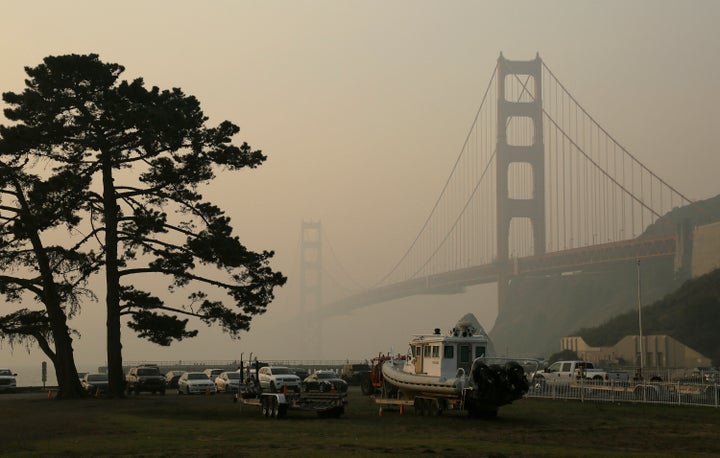WASHINGTON, July 17 (Reuters) - The number of unhealthy air days in major cities across the United States has risen sharply over the last two years, even as emissions of key pollutants continue to slip, according to data released by theEnvironmental Protection Agency on Wednesday.
The data comes as the administration of President DonaldTrump seeks to highlight major improvements in America’s air quality since the 1970s as proof the country can protect the environment and boost the economy at the same time.
Trump said in a White House speech last week his administration “has made it a top priority to ensure America”has the cleanest air and water.
“One of America’s great but untold environmental success stories is that we have made – and continue to make – great improvements in our air quality, thanks largely to state and federal implementation of the Clean Air Act and innovation in the private sector,” EPA Administrator Andrew Wheeler said in a statement accompanying the release of its 2018 air trends report.
It showed that, between 1970 and 2018, the combined emissions of six major air pollutants dropped by 74% while the U.S. economy grew 275%. It also showed that, since Trump took office, emissions of the pollutants - which include nitrous oxides, sulfur dioxide, carbon monoxide, volatile organic compounds, and fine and coarse particulate matter - fell between1.2% and 8.7%.
But the data also showed some areas of concern. The number of unhealthy air days for ozone and fine particle pollution in 35 major U.S. cities, for example, increased from a combined 706 in 2016 to 799 by the end of 2018, the highest number since 2012and higher than the 10-year average.
Concentrations of coarse particulate matter (PM10) and fine particulate matter (PM2.5) also increased over the last two years nationwide, according to the data - something EPA attributed mainly to severe wildfires that hit the west.

Air and health advocates said the figures were nothing to celebrate.
“While most of the nation has much cleaner air quality than even a decade ago, there has been an uptick of high ozone and PM levels in many cities across the country,” said Paul Billings, senior vice president of the American Lung Association.
The ALA has found that approximately 43.3% of the U.S.population is concentrated in counties that have monitored unhealthy ozone and/or particle pollution.
Billings also warned that Trump administration efforts to roll back environmental rules to bolster economic growth raised the risk to air and water quality.
“There is an incongruity of the EPA’s positions, on one hand praising the success of the Clean Air Act in improving air quality while on another day calling the law a job killer,” he said .(Reporting by Valerie Volcovici; editing by Richard Valdmanis and Tom Brown)
